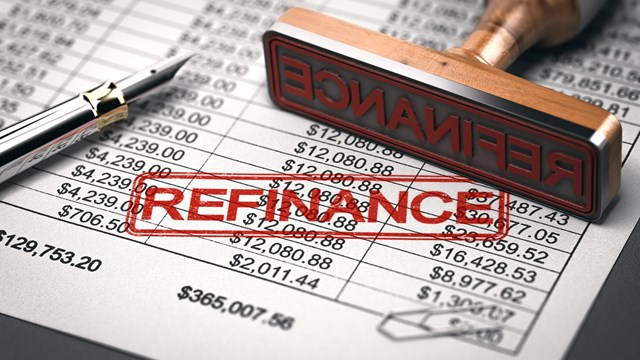
In addition to death and taxes, fluctuating interest rates are pretty much a guaranteed fact of life. That reality raises a question for many co-ops with low interest underlying permanent mortgages coming due for refinancing: how to recast the loan without blowing the budget? Debt service on an underlying mortgage represents a significant portion of monthly maintenance for shareholders. For example, a three percent increase in the annual interest rate on a $1M underlying mortgage for a 50-unit building translates to a$50 per month increase in maintenance on average. When considering the astronomical increases in other costs, such as insurance, real estate taxes, and labor, another $50 every month can become overwhelming.
What are the Options?
When refinancing a mortgage at a higher rate, co-op boards have much to consider. Perhaps the first and foremost question is how much the increase in monthly debt service will be, and how might that increase might be mitigated. “Options are limited,” says Mark Hakim, an attorney with Manhattan-based law firm Schwartz Sladkus Reich Greenberg Atlas. “They can refinance the mortgage at a higher rate, pay off the entire mortgage, or find some blend of each. Ultimately, it will be a decision for the board to make. That decision will be based on the co-op’s finances.”
“There’s really ‘no one-size-fits-all’ answer here,” says Grace Lee, of counsel with law firm Moritt Hock Hamroff, also based in Manhattan. “For the most part, it’s just a question of math – what is the cheapest option over a given period of time? Sometimes, a board will swallow a larger overall loan payment obligation so as not to have to hit their shareholders with a big assessment. Another variable is whether the building has sufficient reserves to reduce their debt service to match their current levels.”
Options generally fall into two categories: The co-op can accept the increase in monthly costs, or they can ‘pay down’ the principal by an amount sufficient to keep monthly debt service at prior levels with a higher rate. Paying down the principal can generally be accomplished by either assessing the shareholders or taking funds out of reserves. According to the pros, both are something of a poison pill.
Assessments vs. Reserves
No one likes assessments - they’re the bane of cooperative living, but sometimes they’re unavoidable. To carry our example above a step further, consider that at a three percent interest rate, the annual interest payment on that $1M mortgage is currently $30,000. If the rate is increased to six percent, the payment goes to $60,000 per year. To maintain the current $30,000 annual payment, the principal would have to be reduced to $500,000. For our 50-unit building, that would work out to a $10,000 assessment per unit. Not a small piece of change, even on a monthly basis of $833 per month per unit average.
Another option is to dip into reserves for all or part of the money. As a rule, reserves are there for exactly their stated reason - to be held in reserve in case of emergency. If a specific corporation has excess reserves (which would be highly unusual) then using some of those reserves to pay down loan principal may be an option. But again, that’s atypical - and those funds will be sorely missed if the roof suddenly needs replacement.
The Preferred Choice
“Assessments are generally preferred, including if a principal paydown is made as assessments are often shorter term temporary solutions,” says Hakim. He continues that in the event of a choice between assessment and maintenance increase assessment may be a better choice, “as a maintenance increase tends to remain in place, regardless of the reason it was enacted in the first place.”
Lee adds, “As far as assessing shareholders, it’s common for buildings to work out a two-track payment system, where shareholders have the option to pay the full amount up front, or to pay more over time. This is meant to be an accommodation both to those who would rather pay less now and those who cannot afford to pay everything at once. The trick is to come up with a proposal that’s fair to everyone and also raises enough money to cover expenses.”
Other Options
While less impactful, there are other options available to soften the blow of increased interest rates. One is to extend the amortization period of the mortgage, the ‘principal pay-back’ portion of the monthly debt service, over a longer period of time to reduce the absolute dollar amount of the payments on a monthly basis.
Another is to pay ‘points’ to the lender to reduce the face amount of the interest rate. That shifts some of the costs up-front. In real terms, the effect is likely a wash as closing costs, which will ultimately have to be paid by the shareholders, will increase.
Increasing flip taxes might also help over time to recoup some of the cost of the rate increase or principal buydowns, but that solution ultimately falls on the shareholders as well - in particular those who are planning a move. Additionally, in a high interest rate environment there are fewer sales and accordingly lower flip tax revenues.
“There are no magic wands here,” says Hakim. “Whether it is a principal paydown, assessment, maintenance increase, or other option, a co-op’s options are quite limited when faced with refinancing in today’s environment.” Regardless, the board members must come up with a solution that not all shareholders will like, but as always its responsibility is to the co-op as a whole, and not the individual shareholders, or themselves.
Note: The example used in this analysis is oversimplified. No amortization payment is included in the calculation, which would affect the ultimate monthly debt service and pay down amounts. The oversimplification was intended to clarify the stark reality of the situation. Consult your accountant or financial advisor before planning your approach to your specific underlying permanent mortgage refinancing









Leave a Comment